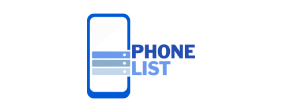Since most people spend much of their day looking at their screens searching for people, places, and products, it’s vital that businesses take advantage of internet advertising. But the world of digital marketing can often seem intimidating and overwhelming. With all the different advertising strategies and platforms, it is difficult to decide which ones are the best fit for your company and budget.
Before we look at six key elements that will help you understand how paid online advertising works, let’s break down the difference between paid, earned, and owned advertising.
Paid Media
This is the easiest to define…it’s any marketing channel that phone number list you pay for to increase traffic to your website. Paid ads are often aimed at potential customers, but it also includes retargeting past customers. Retargeting helps you get visitors back after they’ve already visited your site.
Paid ads generate traffic almost immediately, so it’s a great way to gain visibility quickly.
Owned Media
Everything that relies on the direct control of the business is known as owned media. It does more than sell a product, it pulls customers in. Some examples include your website, blog, email marketing, and your social media profiles and pages.
It can take a few months before the pages of your website can be ranked accurately. And, if you’re measuring SEO, it can take a few weeks to see what kind of traffic a single post brought in.
Earned Media
Earned media is the word of mouth that is shared by other people, usually dkim everything you need to know reviews. It can’t be owned or paid for but instead is obtained organically.
It takes time to measure engagement. You can instantly see ‘likes’ and ‘shares’, but it takes time to track impressions, clicks, and other SEO driven data. You have to consistently promote your content in order to build up engagement.
Six Things You Should Know About Paid Online Advertising
1. Bidding Models
Once you purchase ad spots and the featured ads appear on designated websites, marketers or companies bid against their competition for keywords related to their products or services. Customer actions determine the price, and that’s what makes paid online advertising so complex. The two main bidding avenues are CPM and PPC.
Cost-Per-Mille or Cost-Per-Thousand
Cost-Per-Mille is the amount you invest for one thousand impressions, or ad views. Mille is the Latin word for “thousand”, so cost-per-thousand-impressions is known as CPM. While CPM doesn’t guarantee clicks or conversions, it does increase your ad’s visibility. Also, an accurate calculation of CPM helps you know which ads are performing well, which ones aren’t, and how you can improve your marketing outcomes.
Pay-Per-Click or Cost-Per-Click
The PPC model of internet marketing, also known as cost-per-click (CPC), is when you pay a fee each time one of your ads is clicked. It’s a way of buying visits to your site, instead of trying to “earn” those visits organically.
One of the most popular forms of PPC is search engine advertising. It allows uae cell number you to bid for ad placement in a search engine’s sponsored links whenever someone searches for a keyword related to your business. The price of each click depends on the demand for your keywords. You have a greater chance of conversions with PPC ads, and you’re able to place a limit on the number of clicks you want which helps you maintain a budget.

